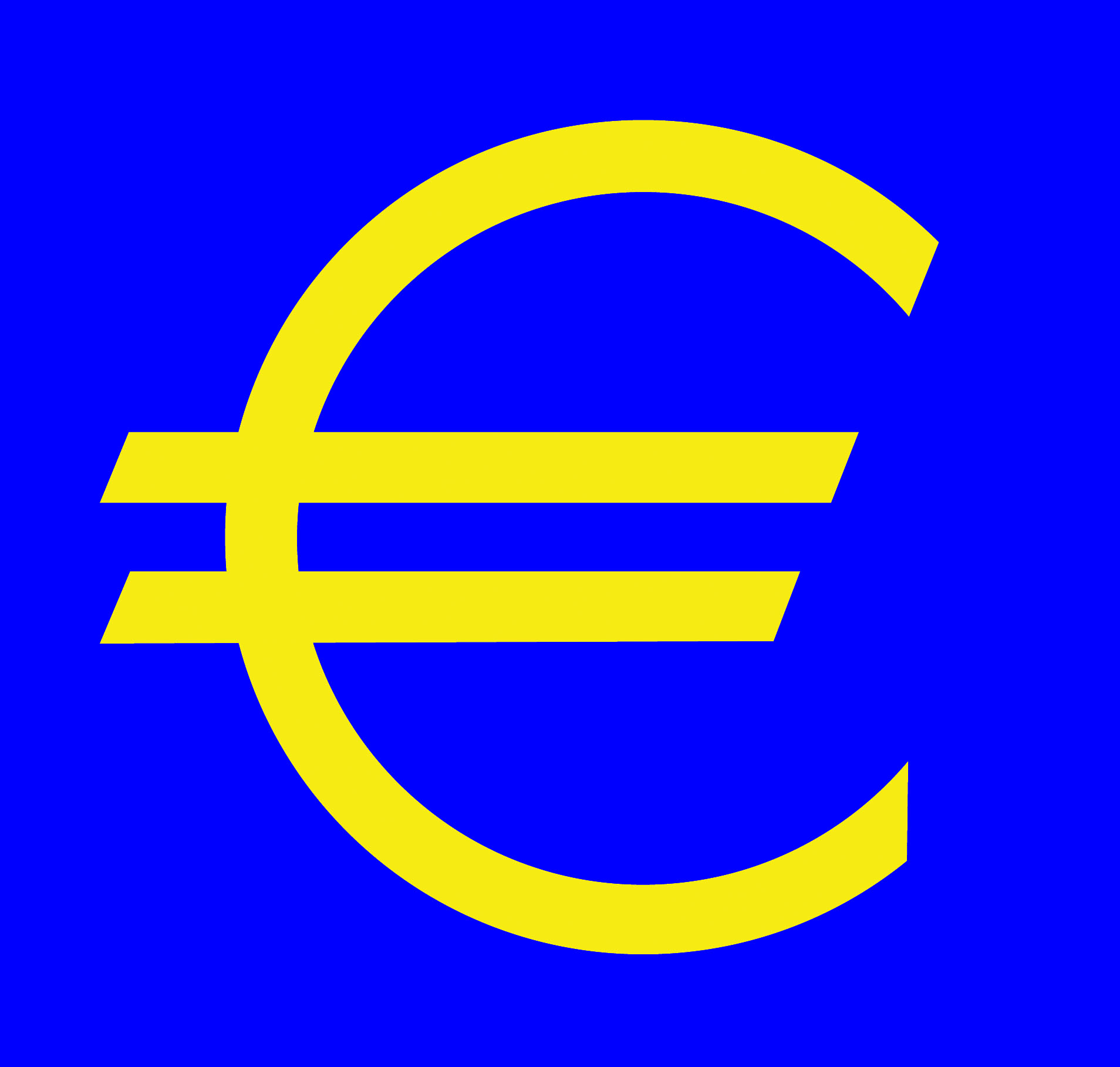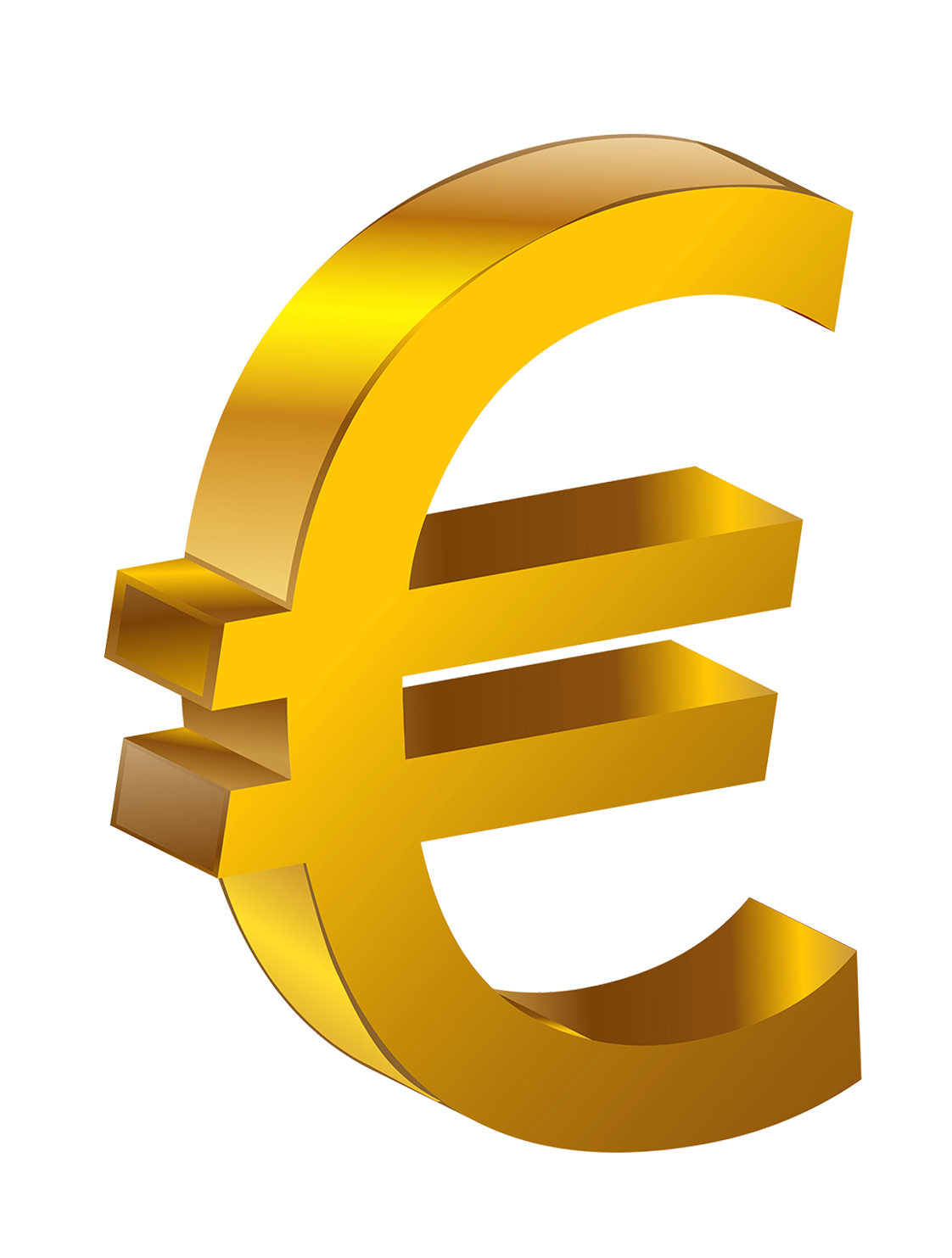Have you ever found yourself glancing at a price tag or an invoice, seeing that familiar mark for the euro, and perhaps wondering a little about its exact shape or what it means? It's a very common sight, so much a part of our daily experiences, yet the specifics of its visual appearance and how we use it can sometimes feel a bit hazy. This mark represents a large part of the global economy, and knowing a little more about it just makes sense, you know?
This particular currency mark, the one for the euro, really stands out as a sign of financial activity across many nations. It's something people see and recognize whether they are making a purchase, looking at financial reports, or simply talking about money matters. It's a powerful little graphic, connecting people and transactions across a vast area, so it's almost like a shared language for money.
So, we are going to spend a little time exploring this well-known currency mark. We will look at what it actually looks like, how you might make it appear on a computer keyboard, and even how it fits into the broader picture of how we talk about money. It’s a pretty interesting piece of information, really, when you stop to think about it.
- Goodwill Estero
- Marlowe Jack Tiger Mitchell
- Lake Travis Water Level
- Sex Video Diva Flawless
- Rob Garrison
Table of Contents
- Understanding the Euro's Visual Mark
- How Does the Euro Symbol Look Like?
- Is That How the Euro Symbol Appears on Keyboards?
- Typing the Euro Mark - What is the Symbol for Euro on Your Keyboard?
- Why Do Different Countries Have Unique Currency Marks?
- Comparing the Euro and Pound Marks
- What is the Euro Currency Format?
- How to Write the Euro Amount - What is the Symbol for Euro's Placement?
Understanding the Euro's Visual Mark
When we talk about money, each type of cash often has its own special picture or mark that helps us quickly tell it apart from others. This is a pretty simple idea, but it makes a big difference in how we handle financial figures. The euro, for instance, has a very particular design that many people recognize right away. It's a quick way to show what kind of money we are talking about, and it's quite useful in everyday dealings, you know?
This visual mark for the euro is not just a random scribble; it has a specific look that makes it distinct. It is a graphic representation that stands for a whole system of money, used by many people in various places. Knowing what this mark looks like, and how it came to be, helps us better appreciate its purpose. It's a way of making things clear and simple in the financial world, which can sometimes be a bit confusing, so it's quite helpful.
Think about how often you see currency marks without even really thinking about them. They are just there, doing their job. But when you stop to consider the euro's mark, you might notice its particular features. It’s a very clever bit of design, in some respects, managing to convey a lot of meaning in a very small space. It's a sign that points to a specific value, making it easy for anyone to grasp what kind of money is being discussed.
How Does the Euro Symbol Look Like?
So, let's get down to the actual look of this mark. The visual representation for the euro has a pretty distinctive appearance that, once you see it, you will likely remember it. It kind of looks like a capital letter 'C' that has been given a little extra something, or perhaps like a slightly curved letter 'E' that has been modified. It's a bit of both, in a way, depending on how you see it, you know?
Specifically, if you picture a big letter 'C', the euro mark adds two straight lines that go horizontally across its middle section. These lines run parallel to each other, making the mark feel very stable and balanced. It's almost as if the 'C' is embracing these lines, giving the whole thing a sense of order. This design is very intentional, and it makes the mark easily identifiable, which is a big part of its purpose.
Alternatively, some people might see it as a curvy letter 'E'. If you imagine an 'E' that has been softened a little, with its corners rounded out, and then picture those same two horizontal lines passing through its central area, you get a similar picture. These lines are really key to the mark's identity; they are what set it apart from just being a regular letter. It's a very simple yet effective design, making the mark for the euro something you can spot from a distance, so that's pretty neat.
Is That How the Euro Symbol Appears on Keyboards?
When you are looking at a computer keyboard, you will find that some of the common money marks are right there, ready for you to use. For example, the mark for the pound sterling, which looks like a fancy 'L' with a crossbar, is often printed directly on one of the keys. The mark for the dollar, that familiar 'S' with a vertical line through it, is also usually visible on a key. These are symbols that have been around for a while, and people expect to see them readily available, you know?
However, not every single mark for money, especially those that are newer or less universally used across all keyboard layouts, will have its own dedicated key that you can just press directly. The world of keyboards is pretty diverse, with different layouts for different languages and regions. So, while some marks are very prominent, others might require a little extra effort to produce, which is just how things tend to be with technology.
This means that while you might see the pound sign or the number sign, which is basically a hash mark, right there on your keyboard, the euro mark might not always be as straightforward. It depends a lot on where you are and what kind of keyboard setup you have. It's a bit like learning a secret handshake; once you know the trick, it becomes very simple, but it's not always obvious at first glance, so that's something to keep in mind.
Typing the Euro Mark - What is the Symbol for Euro on Your Keyboard?
Getting the euro mark to appear on your screen when you are typing can be done in a couple of ways, depending on your keyboard and what kind of computer you are using. It's not always as simple as just hitting one key, but it's usually not too hard once you know the method. For many people, one common way involves holding down a specific key and then typing a series of numbers, which is kind of like a secret code, you know?
One widely used technique is called the "Alt code" method. This means you hold down the 'Alt' key on your keyboard, which is usually found near the spacebar, and then, while still holding it down, you type a particular set of numbers using the numeric keypad on the right side of your keyboard. For the euro mark, that specific number combination is 9837. After you type those numbers and then let go of the 'Alt' key, the euro mark should pop up on your screen, which is pretty neat.
Now, depending on your keyboard's setup, there might be even quicker ways to make the euro mark appear. For instance, on some keyboards, particularly those used in Europe, you might find that pressing 'Ctrl' and 'Alt' together with the number '3' key will do the trick. Or, on others, a combination like 'AltGr' (which is often the 'Alt' key on the right side of the spacebar) and the 'E' key will produce the mark. It really just depends on the specific design of your keyboard, but there's usually a way to get the mark you need, so that's good to know.
Why Do Different Countries Have Unique Currency Marks?
It is pretty interesting to think about how every country, or group of countries sharing money, tends to have its very own special mark for its cash. This isn't just a random choice; it actually serves a very practical purpose. These marks are like little flags for money, letting everyone know immediately which kind of currency is being talked about or used. It's a way of making things clear and avoiding confusion, which is pretty important when you are dealing with money, you know?
Each of these distinct marks helps to set one type of money apart from another, making it easier for people to understand financial figures, whether they are reading a newspaper, looking at a price list, or making a transaction. Imagine if all currencies used the exact same mark; it would be incredibly confusing to know if you were looking at dollars, pounds, or euros without extra words to explain it. So, having unique marks really helps with clarity across the globe.
These marks also often carry a sense of national or regional identity. They become very recognizable symbols that people associate with a particular place or economic area. The euro mark, for example, represents a large group of countries that have come together to use a single type of money. So, while each mark is practical for distinguishing currencies, it also often tells a story about the money's origin and the people who use it, which is quite fascinating, in some respects.
Comparing the Euro and Pound Marks
In our daily lives, it's very common to hear about, or even deal with, two particular kinds of money: the euro and the pound. These two are often mentioned together, especially in news about business or when people are talking about travel. They are both very significant in the world of finance, and they are used by many, many people. It's pretty natural to compare them, given how frequently they come up in conversation, you know?
Right from where they come from, these two types of money are quite different. The euro is the money for a group of countries that are part of the European Union, while the pound sterling is the money used in the United Kingdom. Because they originate from different places, the way they are valued against other types of money, known as exchange rates, is completely separate. One might be worth more or less than the other on any given day, which is just how things work in the financial world.
And, just like their origins and values are distinct, so are their marks. The mark for the euro, as we talked about, looks like a 'C' or 'E' with two horizontal lines. The mark for the pound, on the other hand, is a stylized letter 'L' with a single line going through it. These distinct visual representations make it easy to tell them apart instantly, even if you just see the mark on its own. They are very different, visually, which helps to avoid any mix-ups, so that's really helpful.
What is the Euro Currency Format?
When you see an amount of money written down in euros, there's a particular way it is usually put together, a sort of standard arrangement that makes it easy to read and understand. This standard way of showing the amount is known as the currency format. It's a bit like how we arrange words in a sentence; there's a general order that makes sense to most people. For the euro, this format is pretty consistent, which helps with clarity across all the places it's used, you know?
The standard way of presenting a euro amount begins with the mark for the euro itself. This means you will see the '€' symbol first. After that, you will find the actual numerical value, which is the number telling you how much money there is. So, it's always the symbol, then the numbers. This order is pretty common for many types of money, but it's good to be aware of it for the euro, as it's the expected way of writing things down.
Furthermore, when it comes to showing amounts that include parts of a whole euro, like cents, the format also has a clear rule. There are always two digits after a decimal point to show these smaller parts. So, if you have, say, five euros and fifty cents, it would be written with the mark, then the number five, then a decimal point, and then the two numbers for the cents. This consistent use of two decimal places makes sure everyone knows exactly how much money is being referred to, down to the smallest bit, so that's very useful for accuracy.
How to Write the Euro Amount - What is the Symbol for Euro's Placement?
When you are writing out amounts of money in English, and you are using the euro, there is a general rule about where the euro mark should go in relation to the numbers. This is a pretty common way of doing things, and it helps keep everything looking consistent and easy to read. It's a bit like how we put punctuation marks in a sentence; there's a usual spot for them, and sticking to that helps everyone understand, you know?
For the euro, when you are writing in English, the mark typically comes before the actual number that represents the amount. So, you would put the '€' mark first, and then you would write down the value. This is the same way we often handle other well-known currency marks, like the one for the dollar or the one for the pound sterling. For example, just like you would write '£5' for five pounds, you would write '€5' for five euros.
This placement, with the mark appearing before the numerical value, is pretty standard across many different types of money when written in English. It helps to immediately signal that the numbers that follow are indeed a monetary amount, and specifically, what kind of money it is. It's a quick visual cue that most people are familiar with, making it simple to process the information without any hesitation. So, remembering to put the euro mark first is a good habit to have when you are writing about money in English, as a matter of fact.
We have covered quite a bit about the euro's mark, from its particular look, which is like a 'C' or 'E' with two horizontal lines, to how you can make it appear on your computer keyboard using methods like Alt codes or specific key combinations. We also discussed how different countries have their own unique currency marks, and how the euro and pound, for instance, have distinct visual representations and origins. Lastly, we explored the standard way euro amounts are written, with the mark coming before the number and typically including two decimal places for cents.
Related Resources:



Detail Author:
- Name : Nakia Jakubowski MD
- Username : kadin28
- Email : carroll.alana@yahoo.com
- Birthdate : 1999-09-22
- Address : 320 Lemke Course Amirborough, CA 84178-5587
- Phone : +1-469-449-3810
- Company : Torp, Weber and Hintz
- Job : Landscape Architect
- Bio : Ut praesentium sunt corporis optio officiis et veniam. Vel facere enim eos sequi aut illo. Temporibus voluptates natus deserunt quis quo quia totam culpa.
Socials
facebook:
- url : https://facebook.com/paula.king
- username : paula.king
- bio : Sit odio ex fugit quidem magni at.
- followers : 911
- following : 1713
twitter:
- url : https://twitter.com/paula_dev
- username : paula_dev
- bio : Velit quia autem animi iste doloribus fuga et. Delectus voluptatem repellat corporis officiis ipsum. Et voluptate et vitae molestias assumenda blanditiis.
- followers : 4777
- following : 1834
tiktok:
- url : https://tiktok.com/@king1992
- username : king1992
- bio : Sapiente tempora inventore ab non corporis quisquam sint.
- followers : 6019
- following : 217
linkedin:
- url : https://linkedin.com/in/paula.king
- username : paula.king
- bio : Qui deserunt praesentium sunt voluptatem rem et.
- followers : 1831
- following : 552